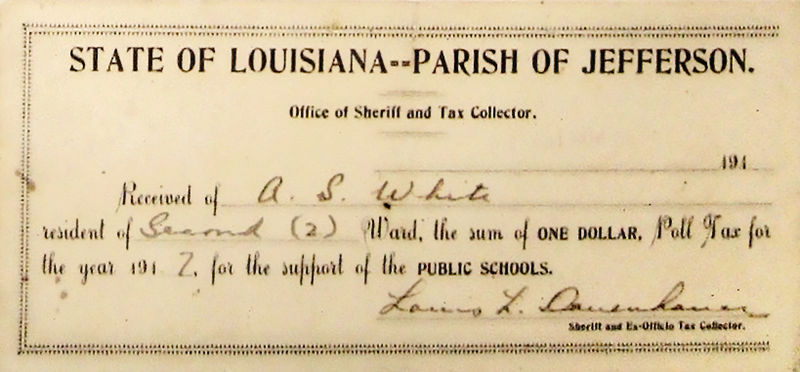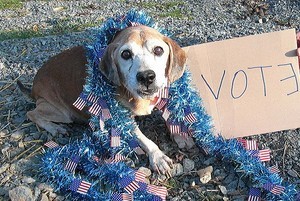
Vote early and vote often. Those are the words so often sarcastically repeated when referencing the issue of voter fraud. Recently, several states have created legislation that will ostensibly help to quell the latter part of that aphorism. The primary aspect of these laws is the requirement of some manner of voter ID. While the specifics differ from state to state, this key provision has become quite a matter of contention. And, as is all too often the case, the line between the two prevailing political parties is drawn.
Republicans, comprising the majority of proponents, feel that photo identification is necessary to prevent voter fraud. Democrats, on the other hand, are concerned that this new requirement will adversely affect a large portion of their voter base—primarily minorities, the underprivileged, and students.
Furthermore, opponents draw attention to a myriad of studies that purport to show a minimal existence of blatant voter fraud ¹. Often, each potential case is ultimately classified as one of a number of logical causes and not, in fact, patently fraudulent; opponents use this as further evidence that photo identification is not necessary. However, each supposedly “logical cause” of the appearance of voter fraud — clerical errors, copying errors or any of a number of human errors — provides further evidence of the need for a standardized form of identification.

This can minimize the archaic methods currently used to authenticate voters. Why is it in the age of smart phones and other state of the art technology we seem to be unable to provide our citizens with a secure and verifiable method to voice our opinions at the polls?
The simple fact is that a driver’s license, or similar state-issued identification, with its electronic verification ability, is one step toward creating an election process that has minimal cases of “fraud” or error. A standard picture ID connects the voter to the vote; it’s as simple as that.
Yet, many feel that such a requirement would “squelch” the votes of students, indigents, and minorities ². However, new state laws in Indiana and several other states are allowing for extenuating circumstances regarding those who fail to bring such identification. And while various studies report that new stricter voting laws—such as Indiana’s—disproportionately affect minorities and the less fortunate, a study from Harvard reveals that voter ID laws cannot singularly account for lower voter turnout³.
As is often the case with politically-charged issues, the arguments at the margins tend to drown out the substance of the debate. There are anecdotal tales on each side: the poor elderly woman in a rural town who can no longer vote because she misplaced her birth certificate; the volunteer who registered ‘Mickey Mouse’ as a voter in previous elections.
Both sides claim preeminence on the issue; however, what each fails to acknowledge is that the debate overshadows a simple truth: state-issued photo identification will provide a broad layer of voter security. It should go without saying that their usefulness has been widely acknowledged for some time now regarding age-restricted purchases, banking transactions, etc. Is there any doubt that the honorable act of voting shouldn’t be treated with any less regard than these?

However, there is an inescapable fact that must be addressed when contemplating such requirements as voter ID’s: such an obligation has an unquestionably greater affect on a select portion of society. No doubt for some, it is not merely a matter of hopping in the car and driving down the street to the local DMV to obtain a driver’s license of some other state-issued identification.
Presumably, most who do not possess such ID’s also do not have vehicles. For many, it would require a trip via public transportation (if available) and the added costs of reproducing verification such as a birth certificate, in addition to the direct cost of the voter ID itself.
Voter ID: An Objective Approach
Yet these are details that have been—and continually will be—addressed in a variety of ways. In many communities, for instance, churches and other volunteer organizations provide transportation to and from local DMV’s. Furthermore, some groups provide assistance with gathering and obtaining the proper documentation required to procure identification. Additionally, groups such as Voting For America and the Family Research Council, which assist in voter registration, could easily begin to provide assistance helping those who need it in this manner.
These inconveniences are palpable to those whom they affect; however, they can be managed in a way that minimizes their effects on voter disenfranchisement and should not derail a process that leads to universal voter ID possession. A just solution can also ensure that American citizens who want to vote do not have undue difficultly doing so, no matter their social status. However, when the partisan bickering and conjectured storytelling are stripped away, what remains is an objective reality that will foster common sense solutions.
LINKS
- Levitt, Justin. “The Truth About Voter Fraud.” Brennan Center for Justice. https://brennan.3cdn.net/e20e4210db075b482b_wcm6ib0hl.pdf Retrieved 6 August 2012.
- Irvine, Martha. “Could tougher voting laws squelch the youth vote?” Associated Press.
- de Alth, Shelley. “ID at the Polls: Assessing the Impact of Recent State Voter ID Laws on Voter Turnout.”September, 2011.
- Journalists Resource, Retrieved 3 August 2011.
See more at our American Democracy page!
Leave a Reply